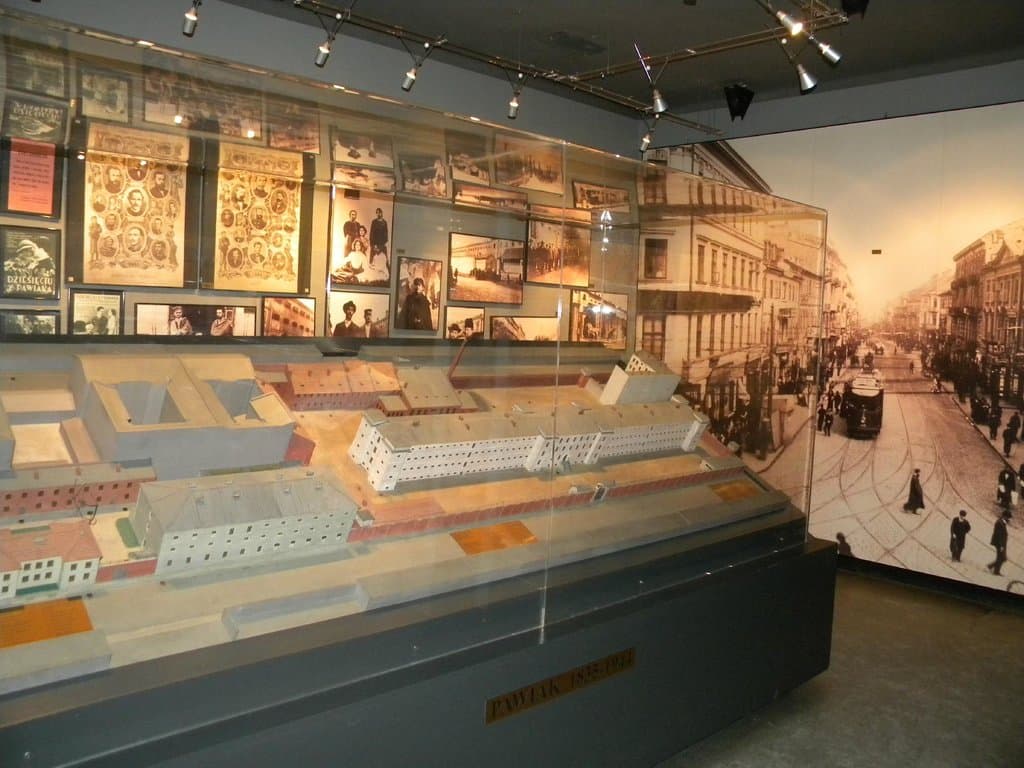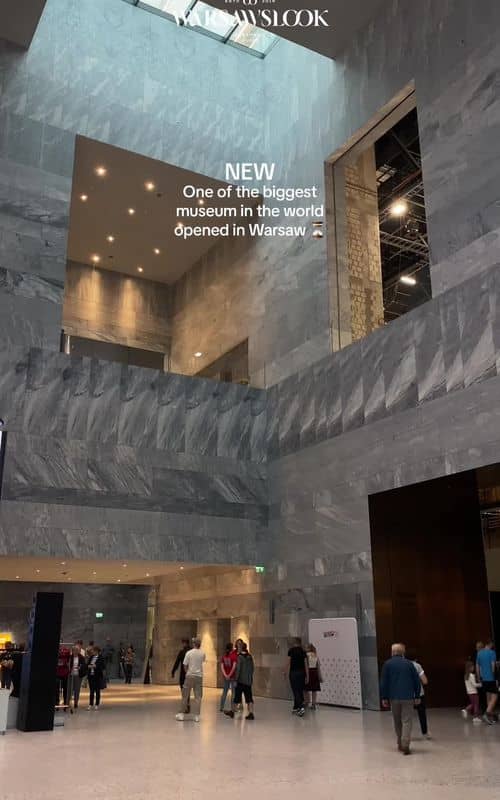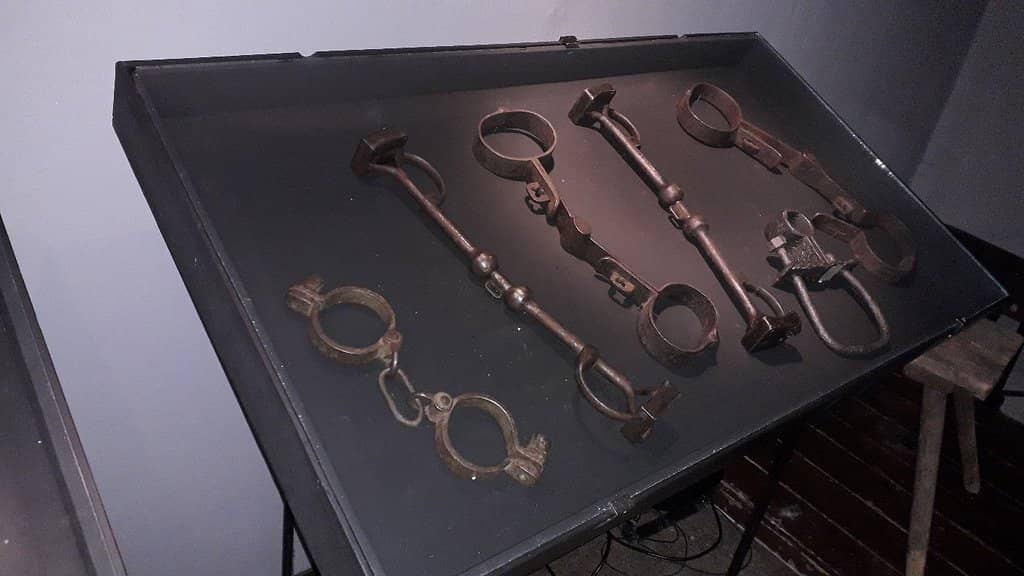
Pawiak Prison Museum Warsaw
A poignant memorial museum on the site of a WWII Gestapo prison, detailing interrogations and executions.

Highlights
Must-see attractions

Social
From TikTok & Reddit
Best Time
Fewer crowds for reflection

Pawiak Prison Museum Warsaw
Best Time
Fewer crowds for reflection

Highlights
Must-see attractions
A poignant memorial museum on the site of a WWII Gestapo prison, detailing interrogations and executions.
"A fascinating and harrowing insight into the terror inflicted on the people of Warsaw. "

🎧 Use the Audio Guide
Highly recommended for a comprehensive and informative experience. It guides you through the exhibits seamlessly.
🕰️ Allow Time for Reflection
This is a somber place. Give yourself time to process the history and emotions it evokes.

Highlights
Discover the most iconic attractions and experiences

The Prison Cells
Original prison building
Step into the chilling reality of former prison cells, offering a stark glimpse into the lives of those incarcerated.
Gestapo Interrogation Rooms
Exhibition spaces
Witness the spaces where unspeakable acts of interrogation and torture took place during WWII.

Artifacts of Resilience
Exhibition spaces
Discover personal belongings and historical artifacts that tell the stories of the prisoners.
Plans like a pro.
Thinks like you
Planning Your Visit
Understand the Weight of History
Timing Your Visit for Reflection
Best Times
Insider Tips
from TikTok, Instagram & Reddit
🎧 Use the Audio Guide
Highly recommended for a comprehensive and informative experience. It guides you through the exhibits seamlessly.
🕰️ Allow Time for Reflection
This is a somber place. Give yourself time to process the history and emotions it evokes.
🧒 Not for Young Children
While not overly graphic, the subject matter is heavy. Consider the age and sensitivity of children.
🚶♂️ Explore the Grounds
The surrounding area also holds historical significance and memorials.
Tips
from all over the internet
🎧 Use the Audio Guide
Highly recommended for a comprehensive and informative experience. It guides you through the exhibits seamlessly.
🕰️ Allow Time for Reflection
This is a somber place. Give yourself time to process the history and emotions it evokes.
🧒 Not for Young Children
While not overly graphic, the subject matter is heavy. Consider the age and sensitivity of children.
🚶♂️ Explore the Grounds
The surrounding area also holds historical significance and memorials.
What Travellers Say
Reviews Summary
Visitors find the Pawiak Prison Museum to be an incredibly informative and moving experience, offering a stark look into the horrors of WWII Gestapo imprisonment. The audio guide is highly praised for enhancing the understanding of the exhibits. While deeply impactful, it's noted as a somber site not suitable for young children.
"Amazing museum of a mid-19th Century prison utilized by the Nazi Gestapo in WWII. Approximately 100,000 people were interred here at various times... with many being transported to extermination camps. Informative museum with many artifacts."
The WWII Professor
"Stumbled across this museum and glad we did. A fascinating and harrowing insight into one aspect of the terror that Nazi Germany inflicted on the people of Warsaw. Thoroughly recommend using the free audio guides."
El Geezer
"The Pawiak Prison Museum is quite a small museum, focusing on the history of the infamous Pawiak prison in Warsaw. While it is an important and educational place, Is not recommended for young children. However, the exhibition does not include any disturbing images or sounds that might scare kids. The displays are respectful and informative, making it suitable for older children and adults who are interested in history."
David Buzalski
What People Like
What People Dislike
Frequently Asked Questions
🚇 🗺️ Getting There
The Pawiak Prison Museum is centrally located in Warsaw. You can easily reach it by public transport, including trams and buses that stop nearby. Many visitors also find it a pleasant walk from other central Warsaw attractions.
Yes, the museum is well-served by Warsaw's public transport network. Several tram and bus lines stop within a short walking distance, making it convenient to access. Check local transport apps for the most up-to-date routes and schedules.
Depending on your starting point, walking to the Pawiak Prison Museum can be a viable option. It's often combined with visits to nearby historical sites, offering a chance to see more of the city's wartime remnants.
🎫 🎫 Tickets & Entry
Opening hours can vary, so it's always best to check the official museum website before your visit. Generally, it's open during typical museum hours, but confirm for specific days and seasons.
Admission fees are typically very reasonable, often just a few Polish Zloty. The museum aims to be accessible to all visitors interested in this important piece of history.
For most visits, booking tickets in advance is not strictly necessary, especially on weekdays. However, during peak tourist seasons or for special events, it might be advisable to check their website for any booking recommendations.
There is no formal dress code, but visitors are expected to dress respectfully, as this is a memorial site. Comfortable walking shoes are recommended as you'll be on your feet for the duration of the visit.
🎫 🧭 Onsite Experience
The museum strongly recommends using the free audio guide. It provides detailed historical context and personal stories, greatly enhancing the understanding of the exhibits.
A visit to the Pawiak Prison Museum typically takes about 1 to 1.5 hours. This allows enough time to go through the exhibits with the audio guide and reflect on the history.
While self-guided tours with the audio headset are the primary method, check the museum's official schedule for any potential guided tour offerings, especially for specific groups or languages.
Photography policies can vary. It's generally advisable to check for signage at the entrance or ask museum staff. Often, photography without flash is permitted in certain areas, but it's best to confirm.
Pawiak was a notorious Gestapo prison in Warsaw during WWII, used for interrogations and executions. Approximately 100,000 people were imprisoned here, many of whom were later sent to extermination camps.
📸 📸 Photography
Photography rules can change, but generally, it's best to assume that flash photography is prohibited to protect the artifacts and maintain the solemn atmosphere. Check for specific signs or ask staff for clarification.
While the interior is somber, the exterior architecture and any memorial plaques or statues outside can be good for respectful photography. The focus inside is on historical understanding rather than photo opportunities.
For Different Travelers
Tailored advice for your travel style
👨👩👧 Families with Kids
If you do visit with older children, consider preparing them beforehand about the historical context and the nature of the museum. Utilizing the audio guide can help provide age-appropriate explanations. However, for families with very young children, other Warsaw attractions might be more suitable for a lighter experience.
📚 History Enthusiasts
Combine your visit with the nearby Museum of the History of Polish Jews (POLIN), which has a section dedicated to the Warsaw Ghetto, or the Warsaw Uprising Museum for a more comprehensive understanding of the city's wartime experience. The Pawiak Prison Museum offers a focused, impactful glimpse into one critical aspect of this complex history.
Deep Dives
In-depth insights and expert knowledge
The Harrowing History of Pawiak Prison
The museum's exhibition meticulously reconstructs the prison's grim history, utilizing original artifacts, personal testimonies, and recreated cell environments. Visitors are guided through the oppressive atmosphere, gaining a profound understanding of the inhumane conditions and the immense suffering endured by the prisoners. The focus is on remembrance and education, ensuring that the sacrifices and atrocities of this period are not forgotten.
While the museum is deeply moving, it's important to note that the content is sensitive. The displays are presented respectfully, but the subject matter is inherently disturbing. The museum's aim is to educate visitors about the realities of occupation and resistance, making it a crucial stop for anyone interested in WWII history in Poland.
Experiencing the Museum: Audio Guides and Atmosphere
The atmosphere within the museum is intentionally somber and reflective. The preserved or recreated prison cells, interrogation rooms, and other spaces are designed to evoke the oppressive reality of life under Nazi rule. Visitors often describe the experience as harrowing and deeply impactful, emphasizing the importance of allowing oneself time to process the information and emotions.
Many visitors recommend dedicating ample time to the visit, not just for the audio guide, but for quiet contemplation. The museum's design encourages a slow, thoughtful exploration, allowing the weight of history to sink in. It's a place that prompts reflection on human resilience and the devastating consequences of political oppression.






Social
from TikTok, Instagram & Reddit